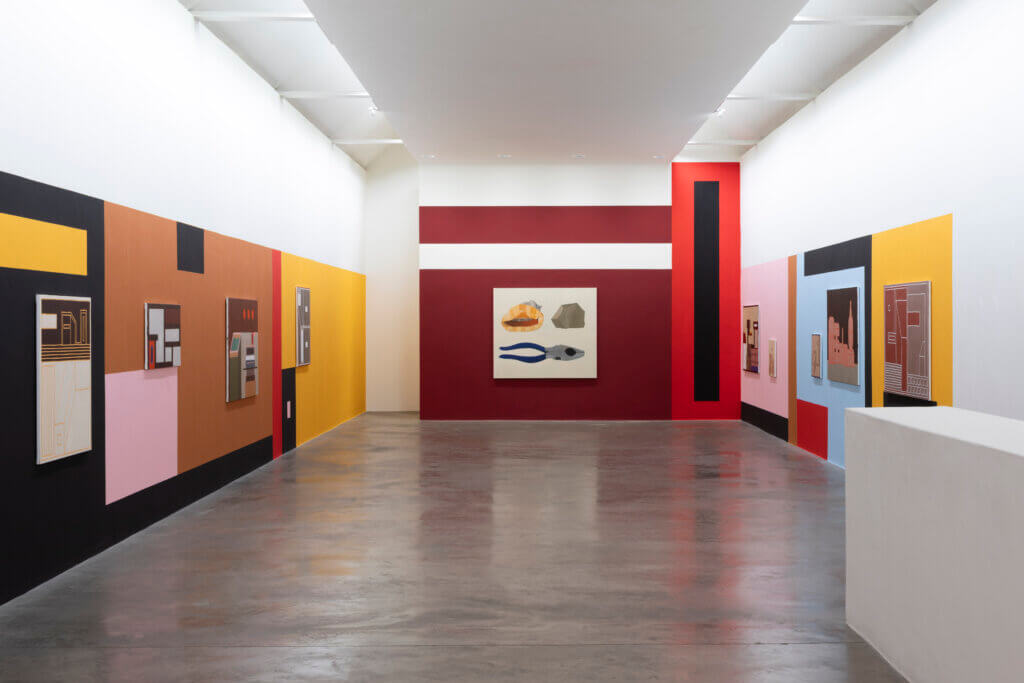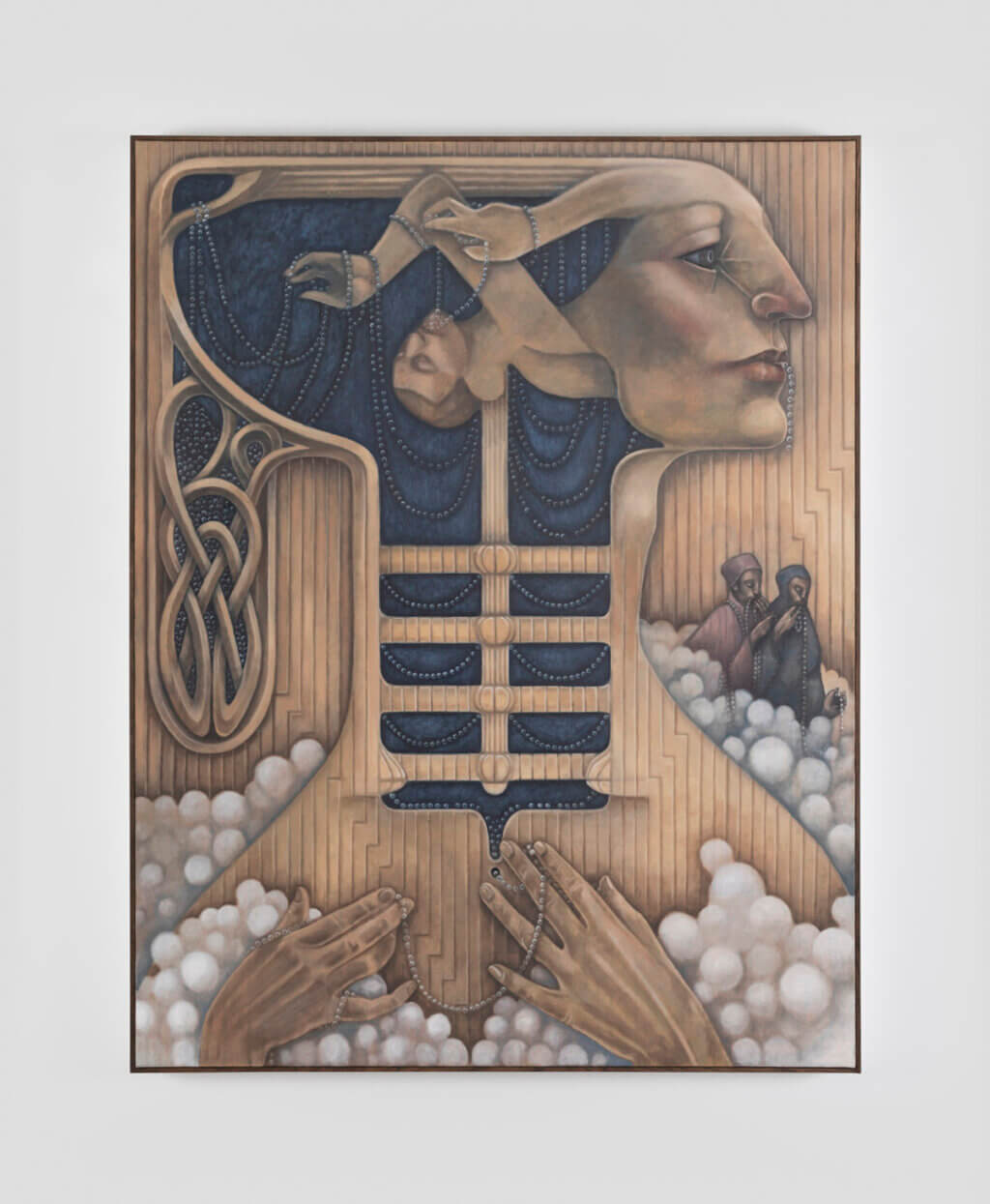
Kerlin Gallery
29th November 2024 – Exhibition
Paul Winstanley: ArcadiaKerlin Gallery presents a new exhibition by
Paul Winstanley,
comprising a new series of paintings titled Arcadia, a continuation of his recent series The Falls, plus the last of his critically acclaimed Veil series, a signature body of work initiated in 1999.
ARCADIA
Titled Arcadia, suggesting ‘something ancient being revisited’, this new body of work looks towards early 19th-century paintings of idyllic mountainous landscapes – pictures that have largely lost their significance through the ‘gauze of history’. Seizing upon the more abstract elements of these works, Winstanley revisits the genre from a contemporary standpoint – first ‘degrading’ inkjet prints of the source images, stripping back detail using a process of wax resist, before recreating them as paintings. Through this process of reinvention, the landscapes become spatial encounters – removed from the specificity of place, they instead tune our attention towards atmosphere, presence, and spiritual charge, all while keeping the ‘shadow’ of the original image.
THE FALLS
As with Arcadia, Winstanley’s series The Falls captures and distorts the motifs of 19th-century landscape painting – reenergising a particular vista of an Alpine waterfall with vivid, shapeshifting palettes that range from the dusky to the bordering-on psychedelic. Both mountains and waterfalls are central to the Romantic notion of the Sublime, in which a fear and awe at the infinity of space becomes an elevated aesthetic experience. Here, Winstanley searches for ways to enrich the source image with something akin to this sensation through infusions of colour and light, which bleed into and warp the image. Transforming this repeated motif into a shimmering mirage, serialised with varying degrees of abstraction, the series invites us to reflect upon how pictures mythologise reality.
VEIL
One of Winstanley’s best-known bodies of work, the Veil series was initiated in 1999 and has been revisited intermittently in the 25 years since, reflecting the changing nature of the artist’s work over this time period. In it, the artist returns to a repeated motif of sheer curtains, usually white, that act as a membrane between the viewer and the world behind. At times, the veil conceals the ghostly impression of a landscape, as is the case here. Though literally cloaking us in mystery, the Veil paintings feel rich with luminosity, surface and texture, inviting us to reflect on the feeling of being in the world and gazing at the beyond; the gauziness of memory; as well as the multi-layered nature of painting itself.
Paul Winstanley has a career spaning five decades and is celebrated for his paintings of ‘semi-public spaces’ that make sense of the experience of seeing. The artist captures environments in which time is suspended, including waiting rooms, lobbies, or art schools emptied during the summer break; thresholds, including veils, windows and corridors; and reflective spaces, like art museums, whitewashed churches and mountainous landscapes. Initially trained as an abstract and minimalist painter in the 1970s, Winstanley reversed the usual trend of 20th-century artists by moving towards a more representational practice. Yet his approach to figuration absorbs the language of minimalism, continuing to explore the elemental qualities of light and space, and their relationship to the object. Bringing this contemporary approach to the ostensibly traditional genres of landscape, interior, still life and figure, Winstanley creates conceptually rigorous work in which the relationship between the viewer and the painting is central. Winstanley looks towards the history of Northern European painting, from the quiet intimacy of Vermeer to the romanticism of Caspar David Friedrich, as well as more conceptual figures like Richard Hamilton, using harmony and pictorial organisation as well as more deconstructionist techniques – abstracting or degrading images from their original source – to render them anew.
Winstanley has exhibited at museums around the world, including Renaissance Gallery, Chicago; Museum of Contemporary Art, Los Angeles; Walker Art Centre, Minneapolis; New Orleans Museum of Art; Museum of Contemporary Art, San Diego; Tate, Hayward Gallery, Barbican Centre, Whitechapel Gallery, Royal Academy, all London; Kettle’s Yard, Cambridge; Fondation del’Hermitage, Lausanne; Hamburger Kunsthalle, Hamburg; Kunstverein Freiburg; Kunstraum, Potsdam; Museum of Modern Art, Rome; Irish Museum of Modern Art, Dublin; Crawford Art Gallery, Cork; Today Art Museum, Beijing; Artspace, Auckland and Museu de Arte de São Paolo.
FROM
29th November 2024—18th January 2025
LOCATION
Kerlin Gallery, Anne's Lane, Dublin 2, Ireland














